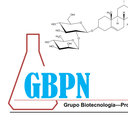Antibacterial and antifungal activities of crude plant extracts from Colombian biodiversity.
Palavras-chave
Resumo
On a global scale, people have used plants to treat diseases and infections, and this has raised interest on the plant biodiversity potencial in the search of antimicrobial principles. In this work, 75 crude n-hexanes, dichloromethane and methanol extracts from the aerial parts of 25 plants belonging to four botanical families (Asteraceae, Euphorbiaceae, Rubiaceae and Solanaceae), collected at the Natural Regional Park Ucumari (Risaralda, Colombia), were evaluated for their antibacterial and antifungal activities by the agar well diffusion method. The antibacterial activities were assayed against two Gram-positive bacteria Staphylococcus aureus and Bacillus subtilis, and three Gram-negative ones named, Klebsiella pneumoniae, Escherichia coli and Pseudomonas aeruginosa. In addition, the same plant extracts were tested against the yeast Candida albicans and the fungi Aspergillus fumigatus and Fusarium solani. Overall, the plant extracts examined displayed better bactericide rather than fungicide activities. In general, the best antibacterial activity was showed by the plant extracts from the Rubiaceae family, followed in order by the extracts from the Euphorbiaceae and Solanaceae ones. It is important to emphasize the great activity displayed by the methanol extract of Alchornea coelophylla (Euphorbiaceae) that inhibited four out of five bacteria tested (B. Subtilis, P. aeruginosa, S. aureus and E. coli). Furthermore, the best Minimal Inhibitory Concentration for the extracts with antifungal activities were displayed by the dichloromethane extracts from Acalypha diversifolia and Euphorbia sp (Euphorbiaceae). The most susceptible fungus evaluated was F. Solani since 60% and 20% of the dichloromethane and methanol extracts evaluated inhibited the growth of this phytopathogenic fungus. The antimicrobial activity of the different plant extracts examined in this work could be related to the secondary metabolites contents and their interaction and susceptibility of pathogenic microorganism evaluated.


